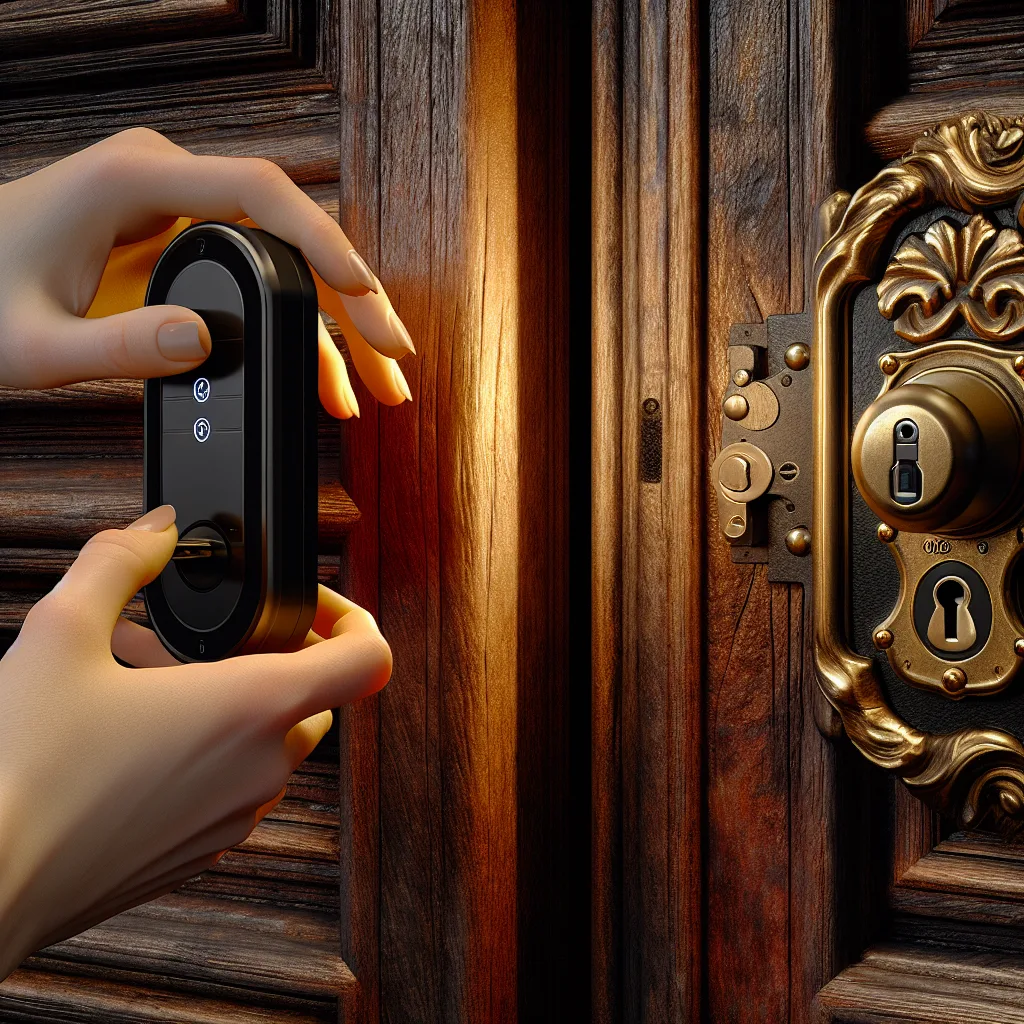Your new smart lock doesn’t fit your vintage door? You’re not alone. Here’s a friendly guide to understanding the problem and finding the right solution.
So, you just bought a shiny new smart lock. You’re dreaming of a keyless life—no more fumbling for keys in the rain, the ability to grant guest access from your phone, and that satisfying little whirr sound as your door unlocks automatically. But then, you hit a snag. You go to install it on your beautiful, character-filled older door, and… it doesn’t fit. The holes don’t line up, the mechanism is completely different, and the instructions suddenly feel like they’re written in another language. If this sounds familiar, you’re not alone. Figuring out how to install a smart lock on an old door can be a real head-scratcher, but don’t worry, you’ve got options.
It’s a common problem in homes with a bit of history. Most modern smart locks are designed for doors with a standard deadbolt—a simple cylindrical lock that’s separate from the doorknob or handle. Older doors, however, often feature a completely different system called a mortise lock.
First, What Kind of Lock Do You Have?
Before we dive into solutions, let’s identify the likely culprit. A mortise lock is a large, rectangular lock body that fits into a deep pocket (or “mortise”) cut into the edge of the door. The handle, latch, and deadbolt are often integrated into one single, formidable piece of hardware. They’re built like tanks, which is great for security, but not so great for compatibility with off-the-shelf tech from Best Buy.
If your lock looks like a single, tall unit inside the door with a combined latch and deadbolt, you probably have a mortise lock. And that’s why your standard smart lock won’t work. But don’t give up on your smart home dreams just yet.
Your Options for a Smart Lock on an Old Door
You have a few paths you can take, ranging from a simple addition to a full replacement. It all depends on your budget, your DIY comfort level, and how much you want to alter your vintage door.
1. The Easy Way: A Retrofit Smart Lock
This is often the best starting point. A retrofit lock, like the excellent August Wi-Fi Smart Lock, doesn’t replace your entire locking mechanism. Instead, it only replaces the thumbturn on the inside of your door.
- How it works: You keep your existing lock, your handle, and your keys. The August lock attaches over your deadbolt’s interior thumbturn and physically turns it for you. From the outside, your door looks exactly the same.
- The Big Caveat: This only works if your mortise lock has a separate deadbolt with a standard thumbturn on the inside. If your lock is a single mechanism where the key and handle do all the work, this option is likely out.
- Pros: Super easy to install (often just a screwdriver and 15 minutes), maintains the vintage look, and you can still use your original keys.
- Cons: Only controls the deadbolt, not the handle’s latch, and compatibility isn’t guaranteed with every mortise lock.
2. The Full Swap: A Smart Mortise Lock
Yes, they exist! Companies have started making dedicated smart locks for mortise doors. These are all-in-one units that replace your entire existing lockset, handle and all.
- How it works: You remove your old mortise lock completely and install one of these high-tech replacements. They often come with keypads, fingerprint scanners, and all the smart features you’d expect. A great example of a modern, full-featured option is the Aqara A100 Pro.
- Pros: A seamless, fully integrated smart solution that looks sleek and modern.
- Cons: Can be very expensive. The installation is also much more complex and will likely require a professional locksmith to ensure it’s done correctly, especially if the new lock’s dimensions don’t perfectly match the old one.
How to Choose the Right Smart Lock for Your Old Door
Feeling a little overwhelmed? Let’s break it down. Here are the questions to ask yourself before you buy anything.
- Can you retrofit? Look at the inside of your door. Do you have a separate deadbolt that you can lock and unlock with a little knob (a thumbturn)? If yes, a retrofit lock is your simplest path forward.
- What are your door’s measurements? If you’re considering a full replacement, you need to be meticulous. Measure the thickness of your door, the “backset” (the distance from the edge of the door to the center of the lock), and the dimensions of the existing mortise pocket. Compare these carefully to the specs of any potential new lock.
- Are you willing to modify the door? Sometimes, the most practical solution is to call a locksmith and have them drill a new, standard deadbolt hole above your existing handle. This opens up your options to almost any smart lock on the market. It permanently alters your door, but it might be the most reliable long-term solution.
- Which smart ecosystem do you use? Whether you go for a retrofit or a full replacement, make sure it’s compatible with your preferred system—Apple HomeKit, Google Assistant, or Amazon Alexa. Trusted tech sites like CNET regularly test and review locks for their smart home compatibility.
Ultimately, putting a smart lock on an old door is a balancing act between preserving charm and embracing convenience. It might take a bit more research than a standard installation, but it’s absolutely achievable. Take a close look at your door, weigh your options, and you’ll be enjoying that keyless life in no time.
(Updated: September 3, 2025)
